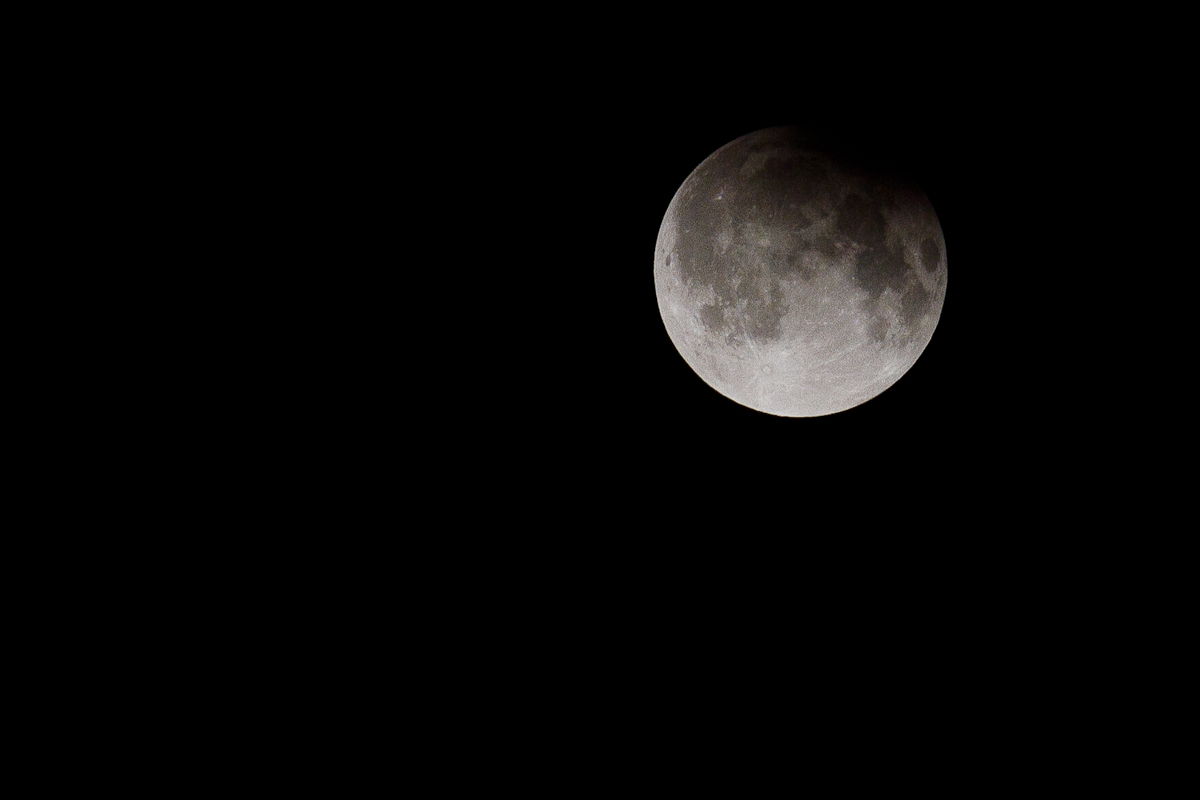Lunar Eclipse Rises With Full Moon Tonight: Watch It Live Online

(Editor's Note: The Slooh Space Camera webcast of the penumbral eclipse has begun. Watch it live here: See Minor Lunar Eclipse in Slooh Webcast )
The full moon will dip into Earth's shadow tonight (Oct. 18), producing a lunar eclipse that can be seen by keen observers around the world.
Weather permitting, skywatchers in Africa, Europe, western Asia, and the eastern parts of North and South America will get the chance to observe part of the southern portion of the moon passing into Earth's penumbra — the planet's outer shadow.
The shading will be subtle, but during the penumbral lunar eclipse, the moon will be partially in shadow for about four hours with the time of deepest eclipse occurring at 7:50 p.m. EDT (2350 GMT). At that moment, the Earth's outer shadow will cover 76.5 percent of the lunar disk. [See amazing photos of a penumbral lunar eclipse]
You can also watch the eclipse online. The online Slooh Space Camera will air a live broadcast of the eclipse starting at 2:45 p.m. EDT (1845 GMT). Slooh's team of experts will join the show at 7:30 p.m. EDT (2330 GMT) to comment during the eclipse's peak. You can watch the penumbral eclipse webcast live on SPACE.com, courtesy of Slooh.
"Although a penumbral lunar eclipse might go unnoticed by someone casually glancing at the moon, we will be able to observe the gradual shading of the moon in the live images Slooh will broadcast throughout the eclipse," Slooh's Paul Cox said in a statement. "The shading becomes far more apparent when viewed as a time-lapse, and we’ll show viewers that during the live segment of the show."
People in the western portion of the United States probably won't get a very good eclipse show. The deepest phase happens during the late afternoon hours before moonrise, but people on the east coast are in a better position to see this celestial event because it occurs right after sunset. The penumbra may be seen over the southern limb of the moon.
Breaking space news, the latest updates on rocket launches, skywatching events and more!
Skwatchers in Africa, Europe and western Asia will be able to catch the eclipse during the middle of the night, as the moon is high in the night sky. The shading will look like a slightly reddish tint on the bright full moon, according to SPACE.com skywatching columnist Joe Rao.
A penumbral eclipse is not necessarily as striking as a total or partial eclipse. During a partial eclipse, the inner shadow (called the umbral shadow) of the Earth partially blocks the moon, while a total eclipse occurs when the Earth's umbra completely casts the moon in shadow.
Editor's Note: If you snap an amazing picture Friday's penumbral lunar eclipse or any other night sky view that you'd like to share for a possible story or image gallery, send photos, comments and your name and location to managing editor Tariq Malik at spacephotos@space.com.
Follow Miriam Kramer @mirikramer and Google+. Follow us @Spacedotcom, Facebook and Google+. Original article on SPACE.com.
Join our Space Forums to keep talking space on the latest missions, night sky and more! And if you have a news tip, correction or comment, let us know at: community@space.com.

Miriam Kramer joined Space.com as a Staff Writer in December 2012. Since then, she has floated in weightlessness on a zero-gravity flight, felt the pull of 4-Gs in a trainer aircraft and watched rockets soar into space from Florida and Virginia. She also served as Space.com's lead space entertainment reporter, and enjoys all aspects of space news, astronomy and commercial spaceflight. Miriam has also presented space stories during live interviews with Fox News and other TV and radio outlets. She originally hails from Knoxville, Tennessee where she and her family would take trips to dark spots on the outskirts of town to watch meteor showers every year. She loves to travel and one day hopes to see the northern lights in person. Miriam is currently a space reporter with Axios, writing the Axios Space newsletter. You can follow Miriam on Twitter.



